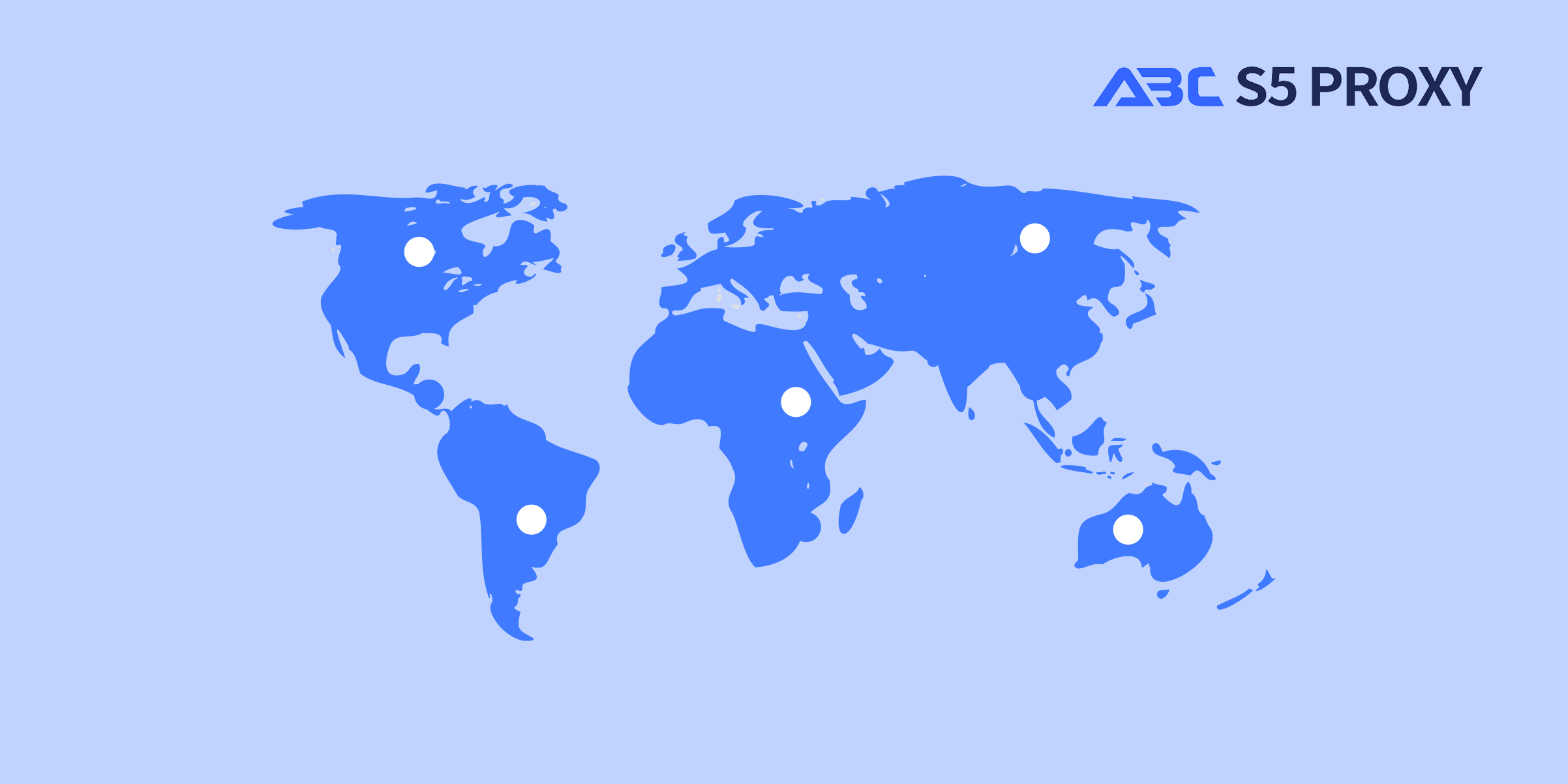Residential Proxies
Allowlisted 200M+ IPs from real ISP. Managed/obtained proxies via dashboard.

Proxies
Residential Proxies
Allowlisted 200M+ IPs from real ISP. Managed/obtained proxies via dashboard.
Residential (Socks5) Proxies
Over 200 million real IPs in 190+ locations,
Unlimited Residential Proxies
Use stable, fast, and furious 700K+ datacenter IPs worldwide.
Static Residential proxies
Long-lasting dedicated proxy, non-rotating residential proxy
Dedicated Datacenter Proxies
Use stable, fast, and furious 700K+ datacenter IPs worldwide.

Web Unblocker
View content as a real user with the help of ABC proxy's dynamic fingerprinting technology.
Proxies
API
Proxy list is generated through an API link and applied to compatible programs after whitelist IP authorization
User+Pass Auth
Create credential freely and use rotating proxies on any device or software without allowlisting IP
Proxy Manager
Manage all proxies using APM interface

Proxies
Residential Proxies
Allowlisted 200M+ IPs from real ISP. Managed/obtained proxies via dashboard.
Starts from
$0.77/ GB
Residential (Socks5) Proxies
Over 200 million real IPs in 190+ locations,
Starts from
$0.045/ IP
Unlimited Residential Proxies
Use stable, fast, and furious 700K+ datacenter IPs worldwide.
Starts from
$79/ Day
Rotating ISP Proxies
ABCProxy's Rotating ISP Proxies guarantee long session time.
Starts from
$0.77/ GB
Static Residential proxies
Long-lasting dedicated proxy, non-rotating residential proxy
Starts from
$5/MONTH
Dedicated Datacenter Proxies
Use stable, fast, and furious 700K+ datacenter IPs worldwide.
Starts from
$4.5/MONTH
Knowledge Base
English
繁體中文
Русский
Indonesia
Português
Español
بالعربية

Title: A Comprehensive Guide on How to Scrape Google Flights Data
In the world of travel planning, Google Flights has become one of the most popular tools for finding and comparing flight options. However, if you are looking to extract data from Google Flights for analysis, research, or any other purpose, you may be wondering how to effectively scrape this information. In this blog post, we will provide you with a comprehensive guide on how to scrape Google Flights data efficiently.
Web scraping is the process of extracting data from websites. It involves using automated tools or scripts to gather information from web pages and then save it in a structured format for further analysis. When it comes to scraping data from Google Flights, there are a few key considerations to keep in mind.
Before scraping any website, it is important to review the website's terms of service to ensure that you are not violating any rules or regulations. Google Flights, like many other websites, has a set of terms and conditions that users must abide by. Make sure to read and understand these guidelines before proceeding with any scraping activities.
There are several web scraping tools available that can help you extract data from Google Flights. Some popular options include BeautifulSoup, Scrapy, and Selenium. Each tool has its own strengths and weaknesses, so it is important to choose one that best suits your needs and technical abilities.
Once you have selected a scraping tool, you will need to set up your scraping environment. This may involve installing the necessary libraries, configuring your scraping tool, and writing the code to extract data from Google Flights.
Before you start scraping Google Flights, it is important to determine what specific data you are interested in extracting. This could include flight prices, departure and arrival times, airlines, layover information, and more. By identifying the data you need in advance, you can streamline the scraping process and avoid collecting unnecessary information.
One of the challenges of scraping Google Flights is dealing with dynamic content. Google Flights uses JavaScript to load search results dynamically, which can complicate the scraping process. To overcome this challenge, you may need to use tools like Selenium that can interact with the website in real-time.
When scraping data from Google Flights, it is important to be mindful of the website's anti-scraping mechanisms. Google may detect and block scraping activities if they are done in an aggressive or disruptive manner. To avoid detection, consider using proxies, rotating user agents, and implementing delays in your scraping code.
Once you have scraped the data from Google Flights, you will need to store it in a structured format for analysis. This could involve saving the data to a CSV file, a database, or a cloud storage solution. You can then analyze the data using statistical tools, visualization software, or any other analysis tools of your choice.
Scraping data from Google Flights can be a valuable way to gather insights, compare flight options, and make informed travel decisions. By following the steps outlined in this guide, you can effectively scrape Google Flights data in a manner that is efficient, ethical, and compliant with the website's terms of service. Happy scraping!
Featured Posts
Popular Products
Residential Proxies
Allowlisted 200M+ IPs from real ISP. Managed/obtained proxies via dashboard.
Residential (Socks5) Proxies
Over 200 million real IPs in 190+ locations,
Unlimited Residential Proxies
Use stable, fast, and furious 700K+ datacenter IPs worldwide.
Rotating ISP Proxies
ABCProxy's Rotating ISP Proxies guarantee long session time.
Residential (Socks5) Proxies
Long-lasting dedicated proxy, non-rotating residential proxy
Dedicated Datacenter Proxies
Use stable, fast, and furious 700K+ datacenter IPs worldwide.
Web Unblocker
View content as a real user with the help of ABC proxy's dynamic fingerprinting technology.
Related articles

How does the ChatGPT RAG example improve information processing capabilities
Analyze the actual application scenarios of ChatGPT combined with Retrieval Augmented Generation (RAG) technology, explore its value in knowledge integration and data acquisition, and understand how abcproxy provides underlying support for the RAG system.

How does Best Socks5 Proxy ensure anonymous network needs
This article explores the core value of Socks5 proxy in anonymous networks and analyzes how abcproxy high anonymous proxy meets diverse security needs.

How to remove website access restrictions
This article analyzes the technical principles and mainstream solutions of website access restrictions, and explores the core role of proxy IP in bypassing regional blocking and anti-crawling mechanisms. abcproxy provides multiple types of proxy IP services to help you break through network restrictions efficiently.